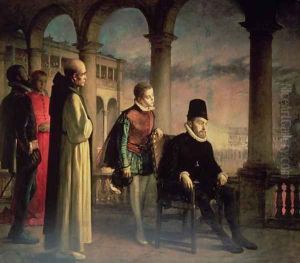Domingo Valdivieso Paintings
Domingo Valdivieso y Henarejos was a notable Spanish painter, born on February 14, 1830, in the town of Jumilla in the Murcia region of Spain. His artistic talent emerged early, and he went on to study at the Real Academia de Bellas Artes de San Fernando in Madrid, which was the premier institution for art in Spain during that time.
During his studies, Valdivieso was deeply influenced by the works of great masters such as Raphael and Titian. His style was characterized by a strong use of color and a focus on religious and historical subjects, which was typical of the academic painting of his time. He was also known for his portrait work, which captured the nuances of his subjects with a remarkable degree of realism.
Valdivieso's career was marked by his appointment as a court painter for Queen Isabel II, which was a significant honor and provided him with both recognition and patronage. His works were exhibited in prominent venues, including the National Exhibition of Fine Arts (Exposición Nacional de Bellas Artes), where he was awarded medals on several occasions.
Tragically, Domingo Valdivieso's life and career were cut short when he died on February 11, 1872, just three days before his 42nd birthday. Despite his relatively brief career, his contributions to Spanish art were significant, and his paintings are still appreciated for their technical skill and their embodiment of the academic style that dominated Spanish art during the mid-19th century. His works can be found in various museums and collections in Spain, serving as a testament to his artistic legacy.
